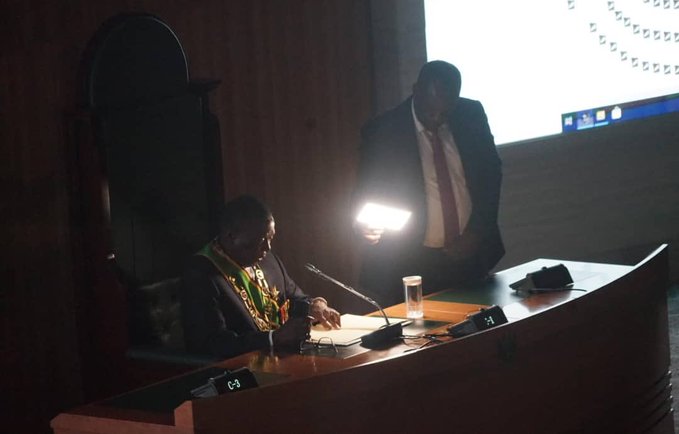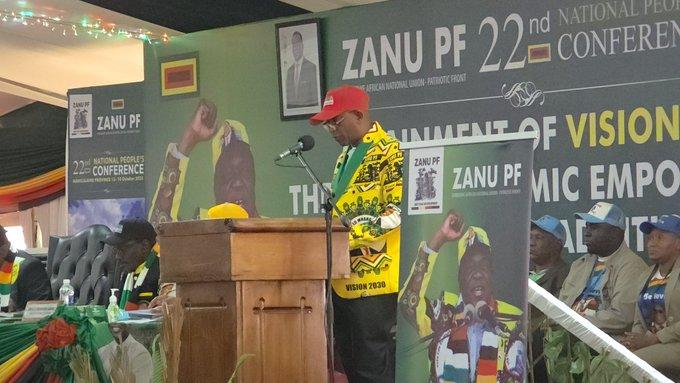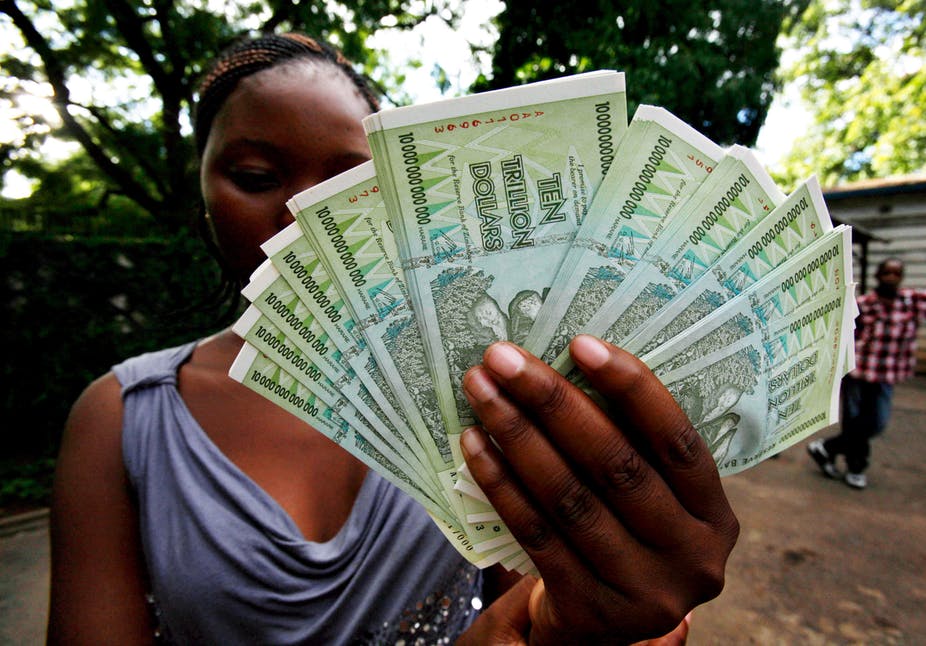The battle for new currency stability faces severe headwinds, and the signs are not good. It was always going to be an uphill task, even under the best of conditions to re-introduce a currency that was 100% rejected in situ only a decade ago. No other currency has suffered the same extreme fate. Significant levels of dollarization, a great many countries have gone through this in the 1980s and early 1990s, from Bolivia to El Salvador and from Argentina to Cambodia. But as to a total currency rejection, as happened in 2007/08, this is completely without precedent in the last hundred years and counting.
Accordingly, the task was ever going to be "sevenfold" difficult in the present circumstances – surging inflation and a rapid build-up of inflation expectations; add to that the pervasive parallel market in an environment of excessive money supply growth. That is the scenario in which the Minister of Finance and Economic Development declared the end of Multicurrency on the 24th June 2019 with the gazetting of the mono currency Statutory Instrument.
Not that the Multicurrency was any longer tenable. That too had run its course and evidently the strain of the Multicurrency on the economy had taken its toll, with Authorities adopting a multitude of differentiated incentives, to ameliorate the adverse effects of a strong hard currency on the economy. That too would add no less than a billion dollars to money supply.
The Multicurrency, which effectively banished the hyperinflation in 2009 and helped stabilize the economy, even achieving recovery and growth at inception, had increasingly vitiated into a US dollar dominated basket, particularly following the sustained depreciation of the Rand since August 2011. Over the subsequent four years to 2015, the Rand would lose about 90% of its value to the dollar.
Correspondingly the bleaching effects of a strong currency were all too evident and clearly not sustainable. Then came June 24, 2019, the re- introduction of the local currency.
The Hon. Minister of Finance and Economic Development evidently took a bold decision. Against him, were staked the fears and psychology of expectations of a generation that witnessed the currency collapse in 2007/08. Then as now, they have heightened fears, they are edgy, like a spooked herd of wildebeest in the Masai Mara plains – in short, they exhibit some modified version of "irrational exuberance" – a state of heightened and elevated fears, which have much to do with the historical than the present. And with it the elevated demand for cash, symptomatic of the "flight to quality" that has become the emblem of public perceptions on the local currency. Those public fears are not helped by the continued money printing by Monetary Authorities, with broad money at $14.7 billion as of June 2019 (plausibly $15.9bn, by end of July). At this rate, broad money will hit $25 billion (inclusive of exchange losses) by December 2019 or just over 150% annual growth. This will continue to fuel the parallel market, price formation and inflation.
Authorities biggest challenge is how to address the non-standard (non-normal) demand for currency, a residual symptom of the 2007/08 hyperinflation. Without a return to currency demand normality, currency stability is a wild goose chase. And the currency will teeter towards the edge of the universe. Perhaps a brief journey backwards can illustrate the magnitude of the undertaking. In 1994, demand for currency (transactional demand for cash) was 6.5% of broad money. This is close to normality. By end of 1997, this had increased to about 10%, following the currency collapse in November 1997. By 2006, as the anvil of monetary expansion and interventionism gathered pace, with rising inflation, "burning" and parallel markets, the demand for currency had accelerated to 28.7% and there is no need to emphasize where this was by 2008, when virtually all transactions were on a cash basis.
South Africa which has not experienced amplified volatility or highly variable inflation, the demand for currency is about 4.5%. In other regional countries and beyond, demand for currency ranges from 5% to about 10%, at most.
The challenge is that demand for currency is inextricably linked to public confidence in macroeconomic policies, in particular the fiscal and monetary policies which have a direct bearing on broad money growth, inflation expectations and the value of money. Perhaps, the Hon Minister gave insufficient attention to the tide of adverse inflation expectations, because for Zimbabwe, the demand for currency has vitiated into space in tow with high and variable inflation. This only "normalized" during the Multicurrency, but the introduction of bond notes resurrected the psychology of adverse expectations and with that the "non-normal" demand for currency.
The money printing and overflow of TB issuances in 2017/18 just worsened the "non-normality". The corresponding surge in money supply growth added fuel to the combustion. Essentially, bond notes, the TBs and surging RTGS de-anchored inflation expectations and until these are re-anchored by concrete monetary policy measures and supportive fiscal policy, there is limited, if not diminished chance of containing the parallel market rate and inflation. Perhaps, the pace of month on month inflation may continue to recede, but that is not enough for competitiveness. South Africa, our biggest trading partner has annual inflation less than 5%. That implies average month by month inflation of less than 0.4% - and this means that any inflation in Zimbabwe in excess of 0.5% per month adds to our uncompetitiveness, vis a vis South Africa.
On balance, far reaching ‘big bang' prototype policy measures have a better chance to anchor "floating" and de-anchored expectations, because they signify a complete departure from the past. Am not advocating for big bang, but concrete, mutually reinforcing decisive policy measures.
A debauched currency benefits no one and we know the effects are most severe on the poor and the unemployed – most of their assets are local currency denominated. What can be done to stabilize the currency, halt it's descend and stabilize domestic prices? Essentially giving the local currency a fighting chance, particularly given the tide of panic re-pricing of goods at depreciated rates. At present, prices of basic goods and services are escalating in response to parallel market rates. Hunger and chronic poverty are worsening on a daily basis. School fees, basic services – all hurtling into space. Most families no longer fret that bread price has risen – that is quite a luxury for most households, particularly with pressing matters such as school fees.
Woe unto you if you happen to fall sick these days. Give a prayer to those among us living with pre-existing conditions. The hospital bills and cost of medication are beyond reach, with Pharmacy drug shortfalls being the order of the day. Rentals present another challenge with most Landlords charging in US dollars. Well would the Prophet Jeremiah sum up our situation thus, "Go to Lebanon (Zimbabwe) and cry!
What can be done to halt the currency decline and break the cycle of inflation expectations. Remarkably, quite a few policy initiatives can be implemented. It is important to acknowledge the progress made by the Hon. Minister in respect of fiscal policy consolidation over the past nine months, giving rise to the budget surplus of $805 million in the first half of 2019. Much progress also in terms of state enterprises reforms, privatization and commercialization. However, the past cannot be wished away and the revised Mid Term Fiscal budget has re-ignited fears that we are back to our past spending patterns – spending beyond our capacity, particularly with the revised budget deficit for 2019.
It is important to think through our policy measures and how the measures are sequenced so that the public fully appreciates the policy objectives and how those objectives will be achieved. An integral part of this will be a recurring need to explain to the public the implementation process. There is need to avoid policy reversals, or policy conflict – conflicting policy signals undermine policy coherence. A seamless implementation matrix is critical.
First: Fiscal and Monetary Policy Coherence:
The most important and urgent task at hand for Government is stabilizing the currency before it gains pace towards the precipice. There is a limited window of opportunity for that. Addressing multilayered adverse expectations, requires also a multi-pronged but integrated approach. Among the most important pillars is the need to ensure synchrony between fiscal and monetary policy, and that does not exist at present. The Ministry of Finance is implementing their austerity while the Central Bank is preparing for expanded productive sector facilities. We know that mopping of any kind does not work because of the attendant high stabilization costs.
As such the target of 10% broad money supply growth, as espoused in the Monetary Policy Statement, is quite ambitious. The likely outcome, in light of the new expansionary measures is that broad money growth will surpass 100% by December this year, even after adjusting for book entry exchange revaluation losses, with far reaching implications for currency stability. There is urgent need for fiscal and monetary policy coherence.
Second: Efficient Interbank Foreign Exchange Market: The parallel market rate had tailed down since 24 June, but this was short-lived. After a month or so of near convergence, the parallel market resurfaced and has continued on an upward drift, driven by fears, expectations, rumours and money growth. This will continue to feed through to inflation.
It is most urgent that all barriers to a fully functional interbank market are addressed. A viable and efficient foreign exchange market will channel resources into the formal market and assuage the tide or pressure for parallel market drift. Similarly, there has to be one price for foreign currency – a uniform exchange rate that applies for all foreign currency transactions in Zimbabwe.
Third: Review of Export Surrender Requirements. To their credit, Monetary Authorities have committed to avail 50% of the foreign currency retention to the interbank market. This is a progressive measure and has, to some degree, increased foreign currency availability to the interbank market. However, going forward, there is need to review the export proceeds surrender requirements altogether to allow higher retention for exporters. This must also take into account Reserve Bank of Zimbabwe and Central Government external payment obligations. A graduated progression is envisaged.
Fourth: Control of Money Supply Growth: Singularly, the most important policy measure to give the currency a fighting chance is that there must be a firm determination to control money supply growth. Our history as a country bears testimony to the journey we have traversed over the past two decades. Too much money has far greater consequences for the preservation of currency, than any other variable in the universe. Money supply growth is singularly the most deterministic factor for currency stability and on current trends, there is no light at the end of the tunnel – only darkening horizons. On money growth, perhaps, the horse has bolted. All Centrals Banks that succeed in bringing down high and variable inflation across the globe have this one thing in common – the capacity to ensure that annual broad money supply growth is consistently below 10% - infact most keep money growth significantly lower than 10%. This, if sustained over time, is the surest way to ensure that expectations are anchored.
The current account! Yes, but nearly all countries, except China, Japan, Germany and Switzerland, and perhaps a few others, run current account deficits, year after year – but most manage to keep the value of their currencies and a stable exchange rate. But no country has ever escaped the effects of too much money flowing in the economy. And too much money only comes from one source - the Central Bank, usually as part of monetization of fiscal deficits or amplified Central Bank interventionism.
Authorities must commit to visible money supply control program, with annual money growth rates only to be determined by private sector credit growth.
Fifth: Measured Currency Printing: Monetary Authorities have committed to increase the amount of cash in circulation. This is supported by theory and also the current shortage of cash in the economy, with cash now commodified in the parallel markets. This inconvenience transcends to include the premium as high as 40% being paid for cash. At 600 million, total cash currently translate to about 4% of broad money, against a minimum threshold of 7.5% or $1.1 - $1.2 billion should be adequate. That is not the challenge. The biggest challenge is that whatever new cash as injected by Monetary Authorities will find its way into the big river, flowing into the big sea – parallel markets – a one-way flow out of the formal system. Even if a billion dollars is injected, as long as the "non-normality" prevails – the cash will not reach the vulnerable poor, the pensioners and rural poor – perhaps some inconsequential residual may. The cash commodity barons are salivating at the prospects of more cash and brisk business. Six months from now and half a billion cash injection and the only noticeable difference will be the narrowing of the cash – RTGS premium differential. There is need for caution on cash injection – it may just accelerate currency depreciation.
In addition, Velocity of circulation, in all likelihood is increasing, with "flight to hard currency" The increase in velocity means that Authorities need to print less and less to meet cash demand for transactions. It is important that Authorities adopt a carefully structured currency printing strategy – a distributed lag process – a little at a time while observing how the currency is creating shifts in the economy in respect of both long run money demand stability and related short-term dynamics of adjustment. It is far from an exact science but this can be the difference between currency stability and volatility.
In my estimation, Authorities should not increase currency in circulation rapidly, but steadily and slowly, (following demand), overtime, after a thorough evaluation of the impact of each injection. If the public perceives new money everywhere, this may trigger a new round of inflation expectations and further currency depreciation, with severe implications for the economy.
Joseph Mverecha is an Economist with a local Bank and he writes in his personal capacity.
- finx
 Zimbabwe announces strict enforcement of axle load limits
Zimbabwe announces strict enforcement of axle load limits  SA decry 'non-existent' Beitbridge border post security
SA decry 'non-existent' Beitbridge border post security  Millions celebrate Diwali festival in India
Millions celebrate Diwali festival in India  Zimbabwe's dollar stock exchange surges 45%
Zimbabwe's dollar stock exchange surges 45%  Gold edges up as traders await guidance
Gold edges up as traders await guidance  Karo Platinum Project capex rises to US$546m
Karo Platinum Project capex rises to US$546m  Young Investment Professional (YIP) Graduate Programme 2019
Young Investment Professional (YIP) Graduate Programme 2019 










 Young Investment Professional (YIP) Graduate Programme 2019
Young Investment Professional (YIP) Graduate Programme 2019
Editor's Pick